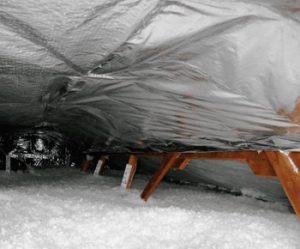Insulation is an often-overlooked aspect of home maintenance and energy efficiency. However, it plays a critical role in keeping your home comfortable and energy-efficient. Over time, insulation can deteriorate, become less effective, or even pose health risks due to contaminants like mold or pests. When your insulation starts to show signs of wear and tear, it is time to consider an insulation removal service. In this article, we will explore the essentials of insulation removal and how it can help you unleash your home’s potential. Before diving into the details of insulation removal, let’s understand why it is necessary. Over time, insulation can become less effective due to several reasons:
 Aging: Insulation materials can break down and lose their insulating properties over time.
Aging: Insulation materials can break down and lose their insulating properties over time.
Pest Infestations: Pests like rodents can make a home in your insulation, leading to contamination and damage.
Mold and Mildew: Moisture can accumulate in insulation, creating a perfect environment for mold and mildew growth, which can lead to health issues.
Fire Damage: Insulation can become a fire hazard if it is damaged or deteriorated.
Energy Inefficiency: Ineffective insulation results in higher energy bills and reduced indoor comfort.
Insulation removal is a meticulous process that should be carried out by professionals. Here’s a breakdown of the essential steps involved:
Assessment: The first step is a thorough inspection of your existing insulation. This helps determine the extent of damage or contamination and the type of insulation used.
Safety Precautions: Insulation removal can release harmful particles into the air, so safety measures are crucial. Professionals wear protective gear, and the area may be sealed off to prevent contaminants from spreading.
Removal: The old insulation is carefully removed, using specialized equipment if necessary. This process ensures that all damaged or contaminated material is safely extracted and visit now.
Cleanup: After removal, the area is cleaned to remove any remaining debris or contaminants. This may include vacuuming and disinfecting the space.
Disposal: Proper disposal of old insulation is essential. It must be disposed of in accordance with local regulations and environmental guidelines.
Now that we have covered the removal process, let’s explore the benefits of investing in insulation removal:
Improved Energy Efficiency: Removing old, ineffective insulation and replacing it with modern, efficient materials can significantly reduce your energy bills.
Enhanced Indoor Comfort: Proper insulation keeps your home cool in the summer and warm in the winter, ensuring a comfortable living environment year-round.
Health and Safety: Eliminating contaminants like mold, mildew, or pest droppings can improve indoor air quality and reduce health risks for you and your family.
Fire Prevention: If your old insulation is a fire hazard, removal can enhance the safety of your home.
Increased Property Value: A well-insulated home is more attractive to potential buyers and can increase the resale value of your property.
Insulation removal is a crucial step in maintaining a comfortable, energy-efficient, and safe home environment. Whether your insulation has deteriorated, is contaminated, or simply outdated, investing in insulation removal and replacement can lead to substantial benefits. By addressing insulation issues promptly, you can unleash your home’s potential, making it a more comfortable and valuable place to live. Your home deserves the best, and proper insulation is a step towards achieving that goal.
